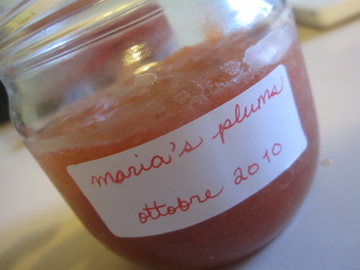I’ve had a lot on my mind lately. Y’know, life stuff. Thankfully, I’m the kind of simpleton who easily finds solace in the little things like a good cocktail, trashy TV (My Life on the D-List, anyone?), dancing to Michael Jackson on rooftops, and well, cooking. On this particularly pensive day, I decided I needed a good long cooking project.
While running a steady playlist of Kathy Griffin on YouTube, I rolled up my sleeves, clipped my fingernails, and set about making home-made gyoza, skins and all. I’d forgotten that making these wonderful pot stickers from scratch was actually one of my new year’s resolutions (oh how soon we forget!) and I figured it would be a perfect way to kill two birds with one stone. I needed a distraction from life stuff and fulfill that damn resolution.
I tied my blue vestaglia tight around my waist lest construction workers next door sneak a peak into my kitchen and gathered the ingredients. I hadn’t planned on making gyoza when I went to the market last weekend, but luckily, I had just about all the necessary ingredients, which goes to show that as long as you have the time and arm-muscle to spare, anyone can whip up these dumplings on a whim.
Ingredients:
(A)

2 cups flour
1/2 cup boiling water
1 pinch salt
(B)


200g minced pork
400g chopped cabbage or lettuce
1/2 cup chopped green onions
1 clove chopped garlic
1 tbsp chopped ginger
1 tsp salt
3 tsp sake
1 tbsp soy sauce
2 tsp oyster sauce
1 tsp sesame oil
To make the gyoza skins:
Slowly add hot water to a bowl of flour, stirring gently with chopsticks until you get lots of little clumps. Knead gently into a rough ball, cover with a damp cloth, and set aside for 1 hour.


In the meantime, make the filling (B) and watch an episode of Will & Grace, Season 3. Cocktail optional.
When you hear Karen’s last zinger and the hour is up, generously sprinkle flour on the cutting board and continue to knead the dough for approx 10 minutes, or until the ball is smooth. Divide in four pieces. Roll out into four long “snakes” and cut 10 pieces per “snake”. This recipe was supposed to make 40 skins, but I think I must have made about 50 or so. I don’t know, I lost count after that episode where Kathy goes to Iraq.



Put Miley Cyrus’ “Party In The USA” on full blast. And begin rolling out each “gnoccho” into approx. 8cm in diameter circles. If you’re a perfectionist, use a circular cookie cutter (or in my case, a lid of a tea can).


Roll, sing, drink, repeat. Remember to dust each skin with plenty of flour to avoid sticking. You can also freeze these babies for a rainy day.

To make the filling:
Simply mix all (B) ingredients in a bowl.
You can change the recipe as you wish by adding nira or kimchi, mushrooms, tofu, carrots, shrimps, what-have-you. Feel free to add some lard or extra sesame oil to give it some juicy fat. Honestly? I didn’t really measure the ingredients out for this so the measurements above are a little wishy-washy.
Wrap ’em up and cook ’em:
Again, dust a plate or pan with plenty of flour to avoid sticking.
Place a skin on the palm of your hand, dollop a teaspoon of filling, wet the edges of the skin with water, and squeeze them shut. There are many ways of wrapping up the pot stickers so please find whatever method that works best for you.


Tonight, I both grilled and boiled the gyoza. Boiling them is a cinch.
Grilling (and steaming), however, takes an inch bit more finesse.


First, heat and oil well a non-stick pan. Place the gyoza evenly and cook on high flame until the bottom turns a lovely brown. Pour 1/2 cup boiling water over the dumplings and immediately cover, let them steam under medium-low flame until almost all the water evaporates. As a final touch, drizzle a tablespoon of sesame oil to enhance the aroma. Serve while steaming hot with a soy sauce-rice vinegar-rayu dunking sauce.

I also prepared a little cucumber kimchi and a simple Chinese-esque broth with green onions, bell peppers, and egg. Kathy was ranting about Tom’s Ambien sleep-eating but I was oblivious to all that besides FB’s frantic chewing and intermittent “Mamma mia che buonoooo–!” and suddenly, life stuff didn’t seem that terrible anymore.

Who needs career counseling or therapy when you’ve got home-made gyoza?



















 Yep, that’s right. A snail fest.
Yep, that’s right. A snail fest.




















































